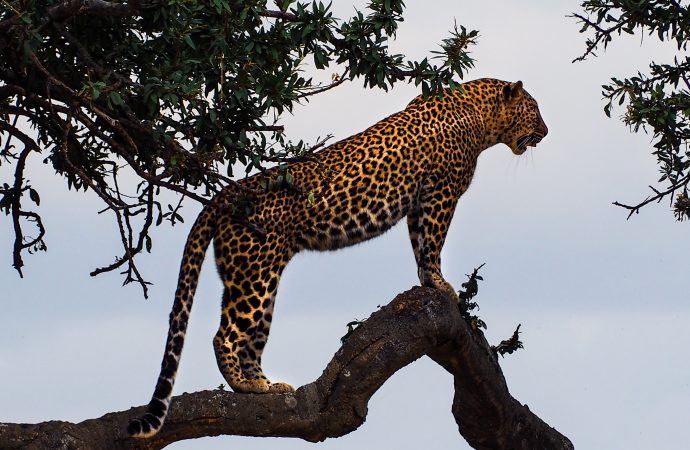Jaguars are one of the most iconic and recognizable big cats in the world. They are known for their distinctive markings, powerful build, and stealthy hunting techniques. But what are the physical characteristics and behaviors that make jaguars so unique? Let’s take a closer look. Physical Characteristics Jaguars are the largest cats in the Americas,
Jaguars are one of the most iconic and recognizable big cats in the world. They are known for their distinctive markings, powerful build, and stealthy hunting techniques. But what are the physical characteristics and behaviors that make jaguars so unique? Let’s take a closer look.
Physical Characteristics
Jaguars are the largest cats in the Americas, with males weighing up to 300 pounds and measuring over six feet in length. They have a stocky, muscular build that allows them to take down prey much larger than themselves. Jaguars are easily recognized by their distinctive coat, which is covered in rosette patterns that help them blend into their surroundings. The color of their coat can vary from tan to reddish-brown, with black spots on the tips of their tails and legs.
Another physical characteristic that sets jaguars apart from other big cats is their powerful jaw muscles. Jaguars have the strongest bite force of any big cat, with the ability to deliver a fatal bite to the skull or neck of their prey. This strength is necessary for taking down larger animals like deer, peccaries, and even caimans.
Behavior
Jaguars are solitary animals, except during mating season when males will actively seek out females. They are also territorial and will defend their home ranges from other jaguars. A jaguar’s home range can cover up to 20 square miles and includes a variety of habitats, including rainforests, grasslands, and swamps.
Jaguars are primarily nocturnal hunters, using their keen sense of sight and hearing to locate prey in the dark. They are also expert swimmers and often use water as an advantage during their hunts. Jaguars are known to prey on a wide range of animals, including deer, monkeys, birds, fish, and even cattle.
In addition to their hunting prowess, jaguars are also skilled climbers. They are able to move around in trees with ease and often use this skill to surprise their prey from above. Jaguars have also been known to drag their prey into trees to protect it from scavengers.
Conservation Status
Despite their impressive physical characteristics and unique behaviors, jaguars are under threat from habitat loss and poaching. The destruction of rainforests and other habitats has led to a decline in jaguar populations throughout their range. Additionally, jaguars are often hunted for their skins and other body parts, which are prized in traditional medicine and the illegal wildlife trade.
To combat these threats, conservation efforts have been implemented throughout jaguar range countries. These efforts include habitat restoration, anti-poaching patrols, and public education campaigns to raise awareness about the importance of jaguars in their ecosystems.
Conclusion
Jaguars are truly remarkable animals, with a combination of physical characteristics and behaviors that set them apart from other big cats. From their powerful build and distinctive markings to their stealthy hunting tactics and climbing abilities, jaguars are a true marvel of the animal kingdom. However, their survival in the wild is under threat, and it is important that we work to protect these magnificent animals for future generations to enjoy. By supporting conservation efforts and raising awareness about the importance of jaguars, we can ensure that these amazing creatures continue to thrive in their natural habitats.

















Leave a Comment
Your email address will not be published. Required fields are marked with *